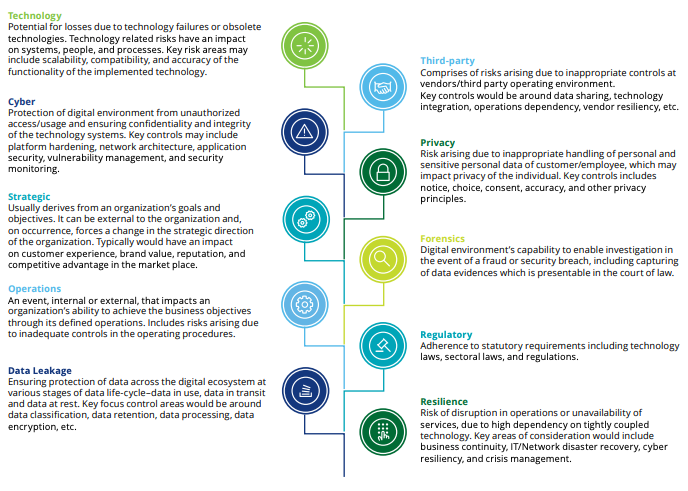Companies are constantly being pushed the latest go-to-cloud strategies and new systems that promise they will "automatically" provide you with increased profit, operational efficiencies, and pretty much anything your IT heart desires.
But, to most IT leaders' frustration, this result is the exception, not the rule. Most IT projects go way over time, don't provide a clear ROI, or are never even finalized.
Find out why in our guide on how to Confidently Align Strategy and Execution Using Enterprise Architecture.

Over the past few years, we've worked with hundreds of companies and thousands of IT leaders, with huge differences in their approach to digital transformation (DT), and there is a common thread between digital transformation projects that fail.
Here's what I've seen from the ones that are winning the race.
⚠️ Truly Understanding the Risk of Digital Transformation Projects
A comprehensive, data-driven, and communicable overview of the risks of change is a critical part of your project delivery process. To confidently predict the impact on business processes to help mitigate inevitable problems and set the right level of expectations with your stakeholders.
IT leaders often have a good grasp of the current situation and challenges; however, most of them struggle to pinpoint correlations and the steps needed to minimize negative impact when asked what-if questions.
Too many companies end up short-sighted in their strategy-making and can't adequately plan for different potential futures or just plain don't know how to get from point A to point B.
Problems for Your Future That Are Born From the Problems of Today
A key element of Risk is also understanding the ground you are standing on.
Who in the organization is responsible for our critical capabilities? What processes are fully digitalized today, and what processes should we automate? What is our current application portfolio? Where should we cut, and where should we invest?
With a keen eye to the future (and in our sometimes understandably desperate efforts to get there), it's easy to lose grasp on the critical state of the now.
How You Can Better Understand the Risk (Both Now and in the Future)
A good best practice piece of advice is to start structuring the different types of risks that are a part of the transformation project. Here's an example from Deloitte's paper: Managing Risk in Digital Transformation.

One of your core success factors will be organizational agility and understanding risks being introduced and the impact the digital initiatives have on their value chain.
Before setting out on a mission to successfully transform the business, you need to know the ground your business stands on. Having a clear picture of the current situation, gaps and vulnerabilities, and the impact of short-term/long-term decisions will not remove the concept of Risk - but it will make the change (and your day-to-day) so much easier.
💬 Change Management Is About Communication
Digital transformation projects bring about change on all levels, often with the biggest challenges hiding in plain site - e.g. dependencies across functions, technology, processes, people, and locations. Even an overview of vendors and how they deliver value can be a hustle.
Connect the Dots
The ability to connect the dots is crucial, even before getting other people on board. Having these "way-too-often" missing insights will allow you to
- Easily manage and mitigate the dependency complexity and set the right expectations
- Understand what, how and who will be impacted by initiatives
"Without addressing deficits in skills and culture, the result is too often putting "digital lipstick" on legacy IT( "Rethink, Reinvent, Realize" - Accenture 2019)
Communicate Across the Entire Company
Execution of new projects is often seen by engaging troops of consultants with best practices and a one-size-fits-all. This can get you a long way, but to drive real value from the top and down, you need to have inside champions with close knowledge or expertise within respective domains.
Overall strategy and direction is not just something that can be communicated and worked upon by the management, in their management seminars two times a month; it needs to be communicated across the entire company. Many of our customers call it "absolute workplace transparency" across all hierarchical levels, as they know that employees are the organization's army. They are the ones with the technical experience and expertise that will be at the forefront of your steps forward.
💪 Really Know and Use Your Resources
Now it's about bringing in the experts with the right skill sets in your organization on your transformation journey to make sure you have the right resources at hand.
According to PMI, there's been a 27% decrease in wasted money due to poor project performance since 2013. The reason? Successful organizations "ensure that their project and program managers have the right skills to drive and navigate change in this dynamic environment."
In their 2020 report (pre-Covid) they told us that leaders are less focused on "change" but instead rebuilding to make agility and creativity part of the organizational DNA. With more than half (53%) of organizations placing a high priority on building a culture receptive to change.
Smarter Hiring for Better Investment
When talking about transformation specific roles, it can be everything from leaders taking on individual initiatives, as well as people from program-management, to transformation offices who are dedicated to full time change effort.
Our customers understand that digitalization, automation, and other technologies are impacting the workforce as they know it and that they need to invest and hire for radically different skills and capabilities - though understanding which skills and capabilities can be difficult.
People That Can Bridge the Gap
At Ardoq we often talk about bridging the gap between business and IT. However, the bridge between traditional and forward-thinking parts of the business is just as important. Having people functioning as integrators and technology-innovation managers can foster stronger internal capabilities among colleagues, making sure new digital methods and processes become a part of existing ways of working.
Same as the link between business and IT, these integrators might have experience from the business side but also understand the technical requirements and gains that technology brings along.
Tackle Your Legacy Culture as Well as Your Legacy IT
In short, it's more than just having the right technology in place to realize your transformation goals. More often than not, it's about legacy culture than simply legacy IT. At Ardoq we're seeing a clear shift in how companies address their DT initiatives, starting with the business objectives at hand and making sure it's always aligned with the overall strategy of your organization.
Takeaways:
🔑Get a clear picture of the current situation, with gaps and vulnerabilities, as well as the impact of short-term/long-term decisions
🔑Connect the dots across functions, technology, processes, people, and locations
🔑Aim for cross-organization transparency
🔑Know our resources, know your experts and build a receptive culture of change around them
Want to get a full understanding of how your people, processes, and data all interconnect?
 Henrik Holth
Account Executive Henrik loves tech, and feels passionate about people and their stories. He loves to uncover learnings from Digital Transformation leaders.
Henrik Holth
Account Executive Henrik loves tech, and feels passionate about people and their stories. He loves to uncover learnings from Digital Transformation leaders.





/Logos/Ardoq/RGB_Ardoq_Logo_Stacked_White_Monochrome%201.png?width=80&height=77&name=RGB_Ardoq_Logo_Stacked_White_Monochrome%201.png)

